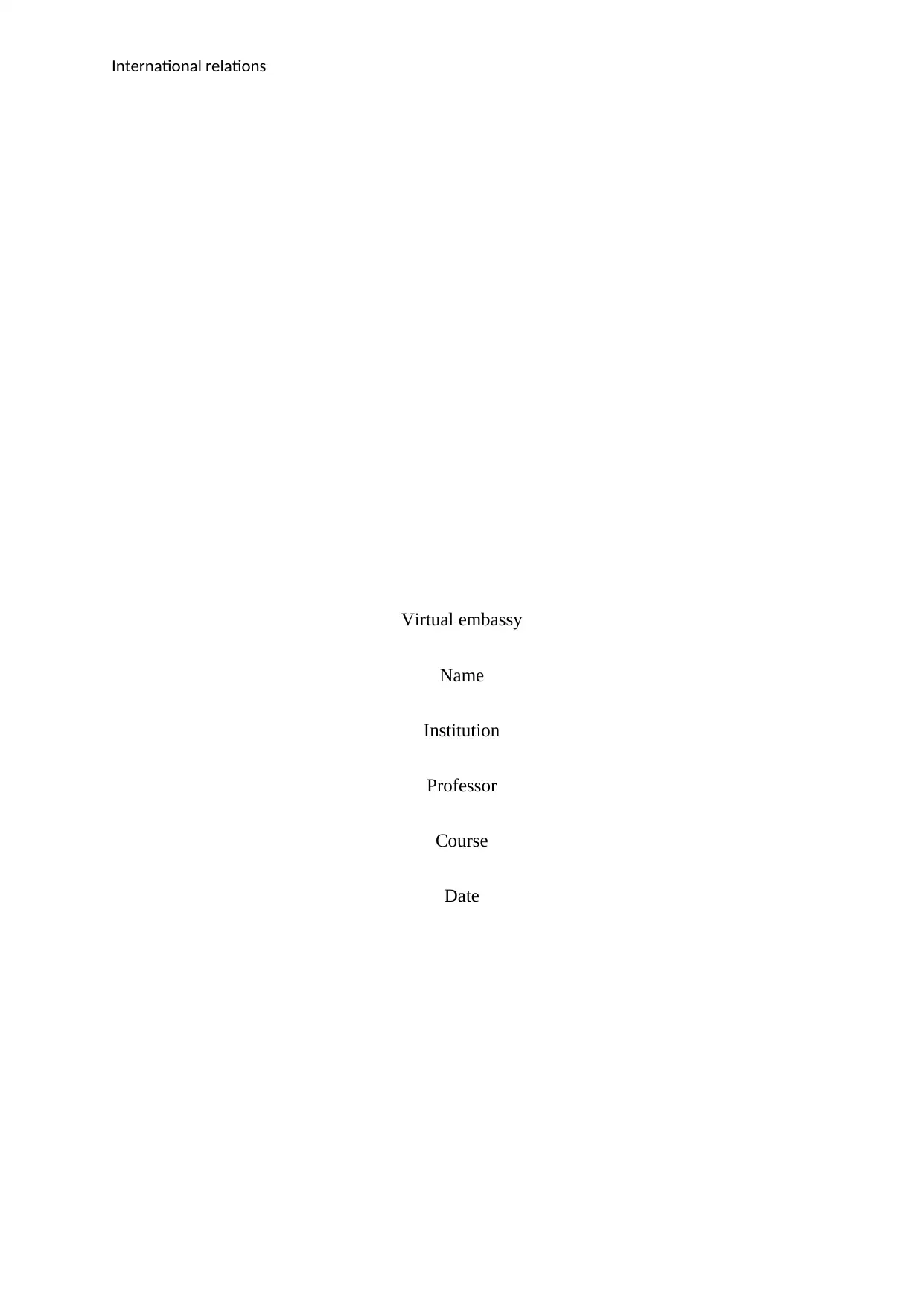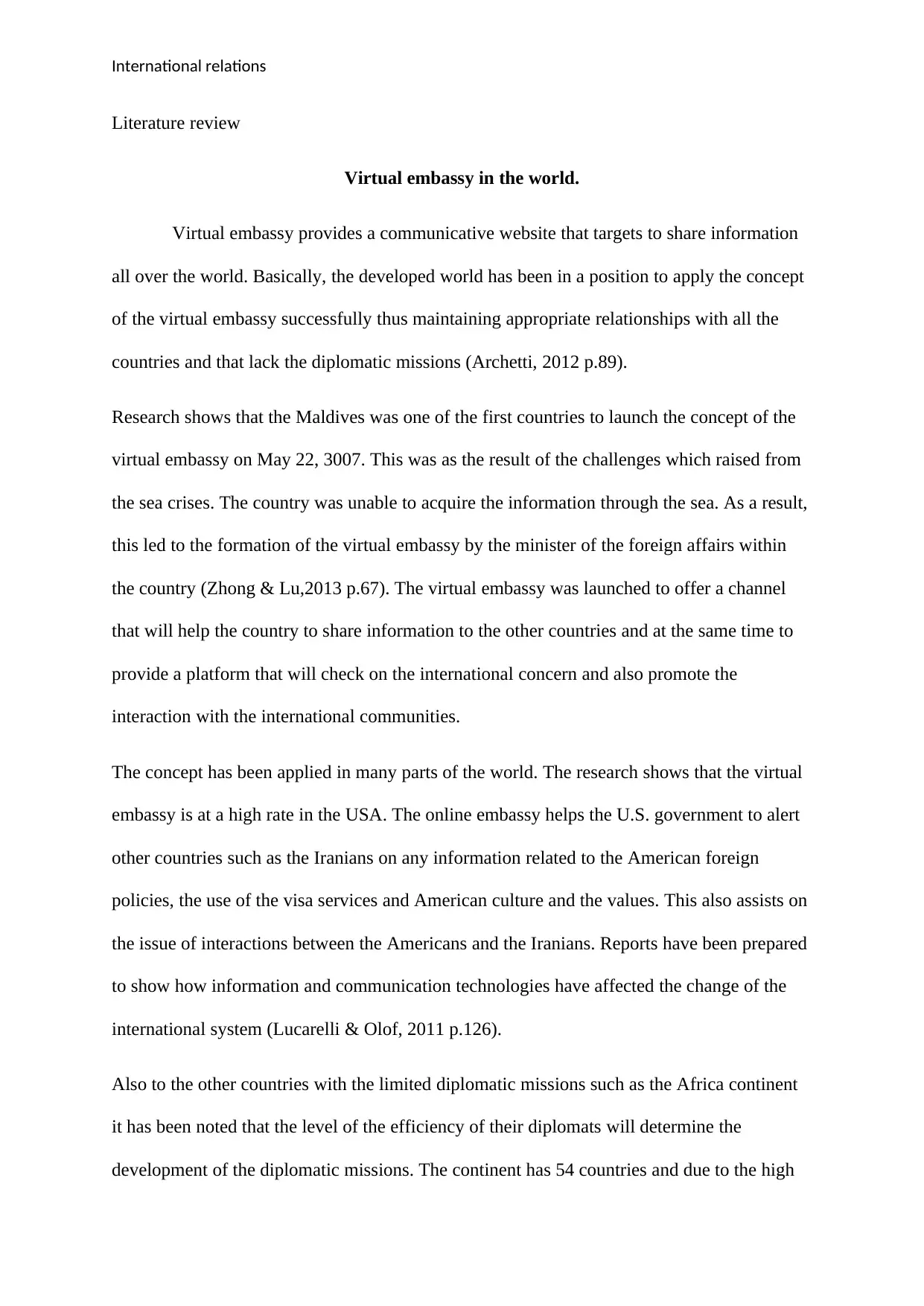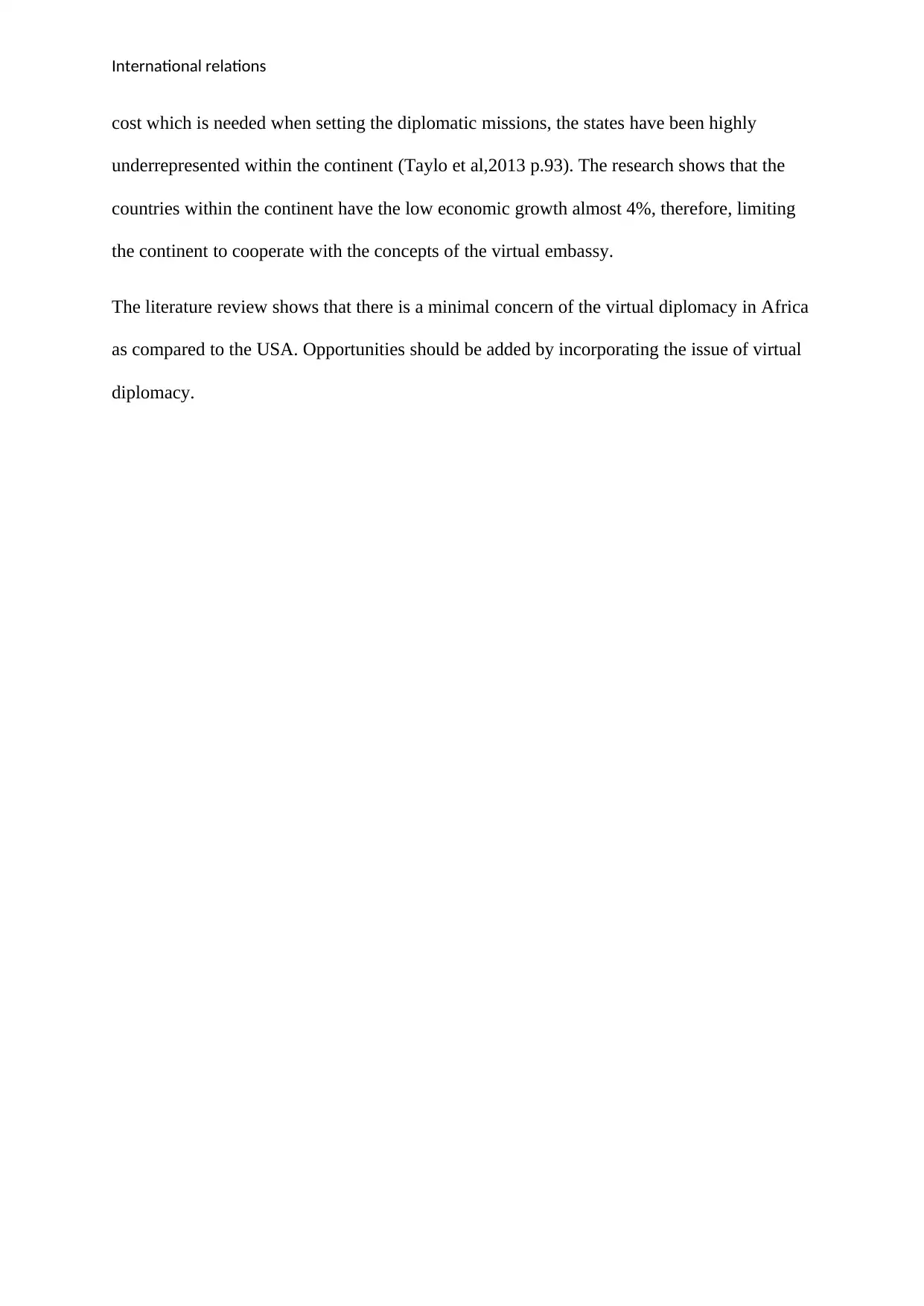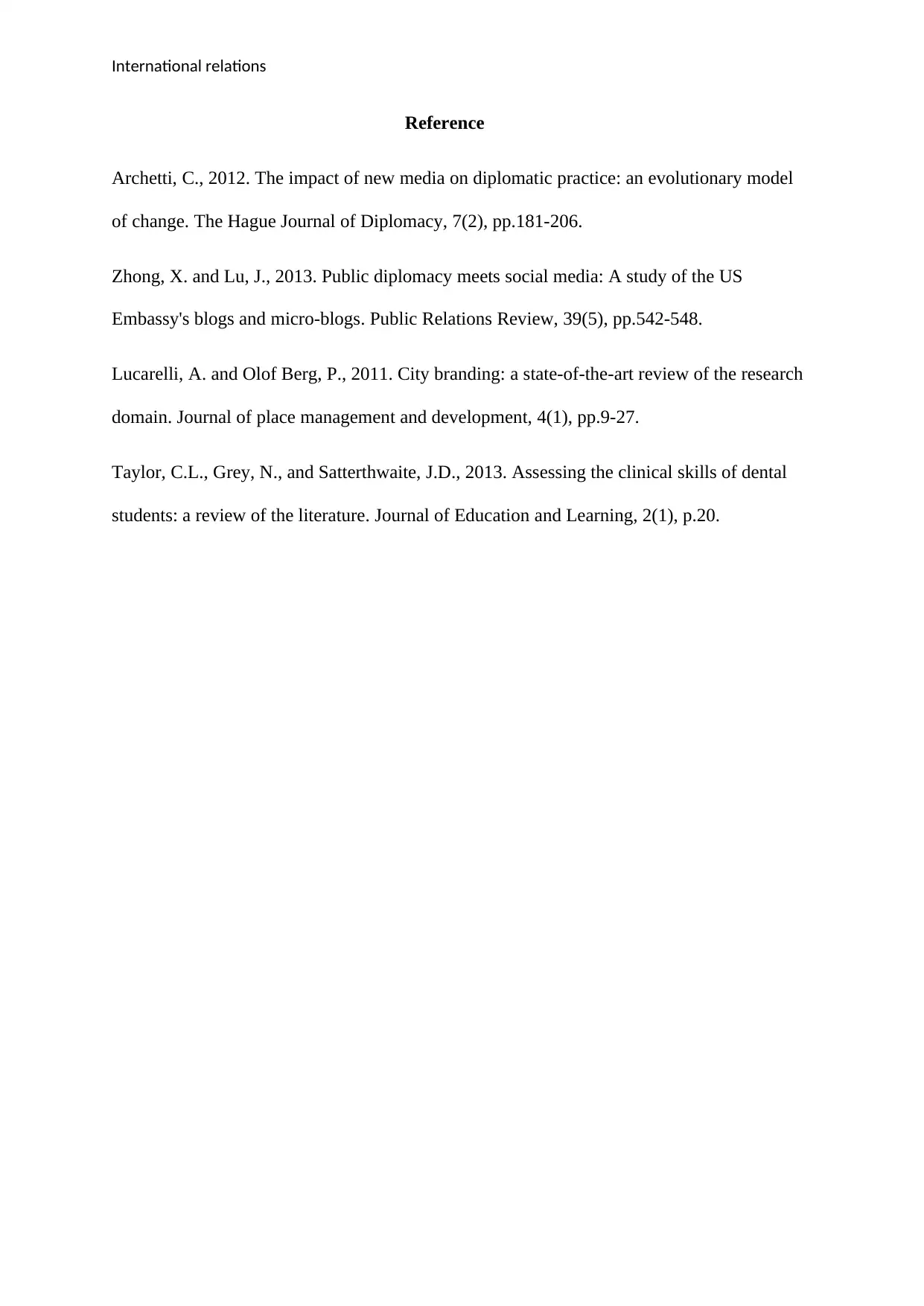International Relations: Virtual Embassy Literature Review Study
VerifiedAdded on 2023/06/11
|4
|608
|465
Literature Review
AI Summary
This literature review explores the concept of virtual embassies in international relations, focusing on their role in information sharing and diplomatic relations. It highlights the early adoption of virtual embassies by countries like the Maldives to overcome geographical challenges and the extensive use by the USA to communicate foreign policies and cultural values to countries like Iran. The review also addresses the limited adoption in Africa due to economic constraints, emphasizing the potential for virtual diplomacy to enhance international relations. The document concludes by referencing key studies that examine the impact of technology on international systems and the challenges faced by countries with limited diplomatic missions.
1 out of 4





![[object Object]](/_next/static/media/star-bottom.7253800d.svg)